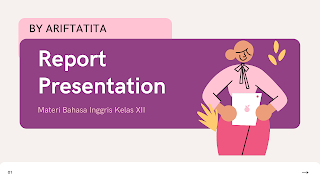In daily life a person unconsciously communicates with others in many
ways such as language, gestures and expressions. In communication he/she is expected
to give or share information with others. In order to make a conversation
understood by the speaker and the hearer, there must be the general principle
of language use, which is called the cooperative principle (Renkema, 1993: 9).
The principle states that the speaker gives contribution in conversation in
which the speaker is engaged. This cooperative principle contains four
categories, which are formulated as basic rules or maxims. Those four maxims
are maxim of quantity, maxim of quality, maxim of relevance, and maxim of
manner.
a. Definition
of Maxim
Maxim is a set of norms which language users adhere to
in order to uphold the effectiveness and efficiency of communication.(Hatim and
Mason, 1990: 242).
Based on Lavinson (1983:103) stated that Grice’s maxims above specify
what participants have to do in order to converse in a maximally efficient,
rational, cooperative way: the participant should speak sincerely, relevantly,
and clearly while providing sufficient information.
While based on other
expert maxim is the assumption of
cooperation is so pervasive that it can
be started as a cooperative principle of conversation and elaborated in four
sub-principles. (George Yule, 2003:37).
Based on the definitions above, the researcher can
conclude that maxim is expresses a general truth or rule of behavior.
b. Kinds
of Maxim
- The maxim of quantity, where one tries to be as informative
as one possibly can, and gives as much information as is needed, and no
more.
Example:
A: “Where are you going?”
B: “I’m going to the post office.”
- The maxim of quality, where one tries to be truthful, and
does not give information that is false or that is not supported by
evidence.
Example:
A: ”What is the quality of that skirt?
B: ”That Skirt is good quality.”
- The maxim of relation, where one tries to be relevant, and
says things that are pertinent to the discussion.
In many cases the relevance of an answer needs to
be inferred on the basis of information from the context. Leech (1983: 94)
provides the following example:
A: Where is my box of chocolates?
B: It’s in your room.
can be compared to
A: Where is my box of chocolates?
B: The children were in your room this morning.
B’s contribution in the first example abides by the
maxim of relevance, since a direct and appropriate answer to the question is
given. B’s answer in the second example appears not to be relevant to the
question at first sight. However, the second example could still be relevant to
the speaker. A will assume that B abides by the cooperative principle and will
therefore infer that specific implied meanings are being conveyed. In the
example given, such implicates could be that the children may have eaten the
chocolate, or that the children may know where the chocolate is, as they were
in A’s room.
- The maxim of manner, when one tries to be as clear, as
brief, and as orderly as one can in what one says, and where one avoids
obscurity and ambiguity.
Maxim of Manner requires the
speaker to avoid obscurity of expression and ambiguity. Maxim of manner demands
the speaker to be brief and orderly. Below are the examples of utterance that
obeys the maxim of manner and that one violates the maxim!
Example of obeying:
1.
A:
Where was Alfred yesterday?
B: Alfred went
to the store and bought some whiskey.
2.
A:
How did you finish your paper?
B:
I finished my paper seriously.
In the firstexample, B’s answer
obeys the manner maxim: be orderly, because she gives a clear explanation where
A was.
Download material about Pragmatigs, you can click this!









